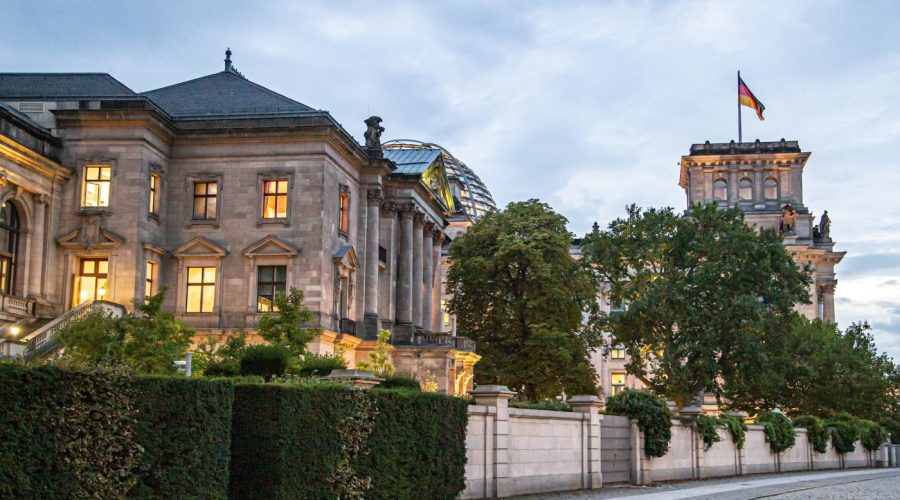What is the Haus des Rundfunks and why is it special?
The Haus des Rundfunks commonly referred to as HDR is another famous architectural building which is situated in Berlin, Germany and is used in the purpose of broadcasting as well as production of media related products. It also forms the centre of the public broadcasting organization in Berlin and the Bundesland of Brandenburg called, Rundfunk Berlin−Brandenburg (RBB). What is more, this building deservedly belongs to the array of famous landmarks of Berlin as well as it has to be discussed as one of the shining examples of the city’s history and architecture. In the following section the main features and importance of the Haus des Rundfunks will be discussed.
A Brief History
The Haus des Rundfunks was built between 1929 and 1931 by two famous architects namely Hans Poelzig and Heinrich Straumer of kitchen. Until the end of WWII it was known as the “Funkhaus Nalepastraße” and at the time was the broadcasting center for “Deutsche Reichssender.” The design of the specific building is inspired from the expressionist as well as New Objectivity movements of the modern architecture period.
Like several others, the building was heavily damaged during the Second World War and later reconstructed in post-war days. During the 1950s it became the broadcasting centre for Rundfunk der DDR and was the station for broadcasting both radio and television programs in East Germany. This broadcasting was later renovated one more time after German reunification in 1990 for use by the new formed Rundfunk Berlin-Brandenburg.
Impressive Architectural Features
The Haus des Rundfunks has a constructional design that is rather different but still practical and fashionable. The outside of the building is quite plain and massive with a monotonous design that incorporates geometric forms, big apertures, and vertical gable steams. The central tower present in the middle of the educational facility and easily distinguishable from different parts of the city makes it more magnificent.
Inside, it has very large studios, control rooms, and production rooms which are very necessary and sufficient to contain all processes of both radio and television. Ceilings are high with acoustic panels, and the area is equipped with the latest technology, which would make an optimal place for production of content. There is also transmission towers within the building used in dissemination of signals within the region.
The Importance of the Haus des Rundfunks
The significance of the building is not only cultural and historical bearing to Berlin but the whole of Germany as well. For these following reasons, it is still considered an important institution:
1. Promoting Media Diversity
One can thus conclude that the Haus des Rundfunks as the headquarters of RBB assumes a significant role in the fight for media pluralism. RBB currently has a number of television and radio station through which it gives a voice to people of different views and cultures. Thus, it enriches the overall media context of Berlin and its areas.
2. Broadcasting Landmark
The current HDR has the peculiarities of the tower as its main landmark and is easily recognizable in the television broadcasts of Berlin. It has many features such as being the first broadcasting city and symbol of media to the whole society . Some people lay their sentiments on their favorite radio programs, news as well as cultural activities associated with the tower.
3. Cultural and Entertainment Events
The facade of the building situated in Berlin known as Haus des Rundfunks holds and organizes many artistic and entertainment programs like live shows, radio play and television programs. Not only do these events serve the purpose of entertaining the masses but also bring the feel of unity and people’s participation. It is possible for visitors to actually watch shows and be a part of viewers for programs aired on television.
4. Architectural Heritage
However, the importance of the architectural aspect cannot be dismissed with regard to the HDR. This therefore makes it iconic with some of the early 20th century architectural designs thus capturing the social theme that was rampant at that time. Its continued functioning as a broadcasting centre exemplify the importance of the architectural history in the modern world.
Visiting the Haus des Rundfunks
If anybody wishes to visit the haus des rundfunks it is situated in fairly easily in the grounds of the RBB in Nalepastraße, Berlin. Although access to the very building remains closed to public, several general Open Days as well as facility tours are arranged by RBB giving an opportunity to learn more about the center.
Also, the density of entertaining establishments is high, there are numerous parks, museums, and historic places to visit around the building. Walking in the surroundings is a unique opportunity to see fine examples of the cultural and creative life in Berlin.
Conclusion
The discussion below aims to present the listeners with some of the historical, architectural, and cultural aspects that can be associated with the Haus des Rundfunks in Berlin. Due to its appealing appearance and the fact that it serves as the base of Rundfunk Berlin-Brandenburg, the building is warmly welcomed. Thus, without being enthusiasts of media or architecture or having some sort of interest in the history of Berlin, one can explore the Haus des Rundfunks.
Table of Contents



